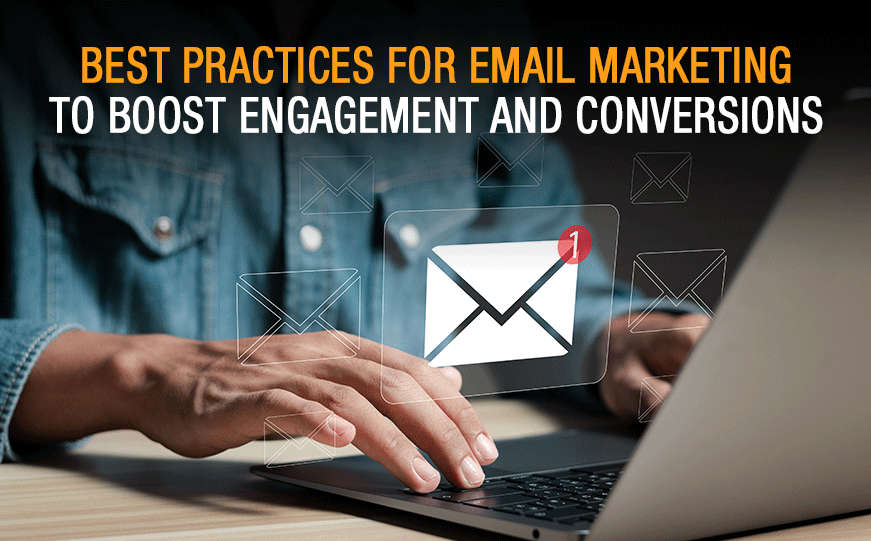In the ever-evolving landscape of Building Products marketing, email remains a powerful tool for reaching target audiences and nurturing business relationships. When executed correctly, email marketing can be a driving force behind lead generation, brand building and revenue growth.
The Power of E-Newsletters
As a reader of our own weekly news and views, it may go without saying that you are already well-aligned with the business model that E-newsletters are a keystone of B2B marketing. After all, they serve as a valuable channel for delivering content and industry trends directly to subscribers’ inboxes.
Part entertainment. But most importantly, an engaging vehicle for sharing strategic insights. When considering “best practice” for e-newsletters, it’s important to keep a few key concepts in mind:
- Segmentation Personalization is key in B2B email marketing. Segment email lists based on factors like industry categories — job roles — and of course, past engagement. This enables sending highly actionable thought-leadership to each group… thereby, increasing engagement and the ability to nurture audiences for building material sales.
- Content Relevance Ensure the newsletter content aligns well with the interests — and pain points — of each audience. Share channel opportunities in the form of case studies and valuable resources that provide actionable solutions.
- Consistency Maintain a consistent sending schedule. In the same fashion that major broadcasters offer “appointment TV” each week… predictability can increase engagement. And familiarity helps maintain awareness.
- Mobile Optimization Given the rise in mobile devices, it’s vital that e-newsletters are “responsive” to ensure user-experience is optimized on all screen sizes.
- Compelling Subject Lines The subject line is the email’s first impression. Grab attention creatively — in the fewest words possible — designed to increase important “open” rates.
Dedicated Landing Pages
Dedicated landing pages and micro-sites play a critical role in B2B email marketing strategies. These are the pages where email recipients land… after clicking a link in the email. Here’s how to make the most of them:
- Relevance Ensure that the content on the landing page aligns well with the email’s message. A disconnect between the email and landing page can result in high “bounce” rates.
- Clear and Concise Landing pages must be clutter-free. And easy to navigate. Visitors should quickly understand the value of the page… and be guided toward a desired destination.
- Strong CTA The landing page should have a compelling Call-to-Action (CTA). Whether it’s downloading a whitepaper — requesting a demo — or registering for a webinar…ensure that the value is clearly prominent. And particularly persuasive.
- A/B Testing Optimize landing pages and micro-sites through A/B testing. Experiment with different elements such as headlines, images and CTA buttons. The goal is to identify what resonates best with each audience segment.
- Analytics Leverage analytics tools to track and measure the performance of every landing page. Analyze data on conversion rates, bounce rates and engagement. As a “learning organization” determine metrics and mine insights… for ongoing improvements.
Prospect List Acquisition
Building and maintaining a healthy email database is fundamental to the success of any B2B email construction business marketing campaign. Here are a few tips to acquire and grow a database:
- Opt-in Forms Place opt-in forms and QR codes on website banners, displays and literature. Encourage visitors to subscribe — by highlighting the value they’ll receive – from future emails.
- Content Upgrades Offer exclusive content, such as ebooks, webinars, or industry reports, in exchange for email subscriptions. This strategy can help attract high-quality leads. And nurture “suspects” into becoming “prospects”.
- Events and Webinars Promote sign-ups during webinars, conferences and industry events. Attendees are often interested in staying updated on related topics. And receiving offers from a trusted resource.
- Social Media Promotion Leverage social media platforms to drive email sign-ups. Share previews of newsletter content. And provide an opt-in link to subscribe.
Compelling Calls to Action
Calls to action (CTAs) are the driving force behind email engagement and conversions. Here are some ideas to keep in mind when creating effective CTAs:
- Clarity Be clear and concise about the action the recipient should take. Consider action verbs like “Download,” “Register,” or “Get Started.”
- Contrasting Design Make the CTA button stand out by using contrasting colors that align with the brand’s color schemes.
- Positioning Place the CTA prominently in the email — and, when possible — repeating it strategically throughout the email.
- Testing Rotate various CTAs to better determine which phrases and designs perform best over time.
Additional Thoughts and Best Practice Tips to Consider
- Compliance Ensure email campaigns comply with relevant norms, such as the General Data Protection Regulation (GDPR) and the CAN-SPAM Act. Obtain consent before sending emails. And provide an easy way for subscribers to opt-out.
- Engagement Metrics Regularly monitor engagement metrics including opens, click-throughs and conversion rates. Leverage insights to fine-tune the strategy.
- Testing and Optimization Continuously test and optimize email campaigns. Experiment with different send times, subject lines — and content strategies — to continually improve results.
- Data Segmentation Leverage data segmentation to provide highly relevant content to differentiated audiences. When an subscriber prefers a particular subject more frequently, lead them with that subject matter theme, as a priority.
Email marketing is clearly a dynamic field. And staying ahead requires a commitment to best practices, ongoing optimization and a deep understanding of audience engagement. If you’d like to explore how an e-newsletter program — like ours — can enhance your digital marketing campaigns, let’s connect at sk@kleberandassociates.com to get the conversation started.




